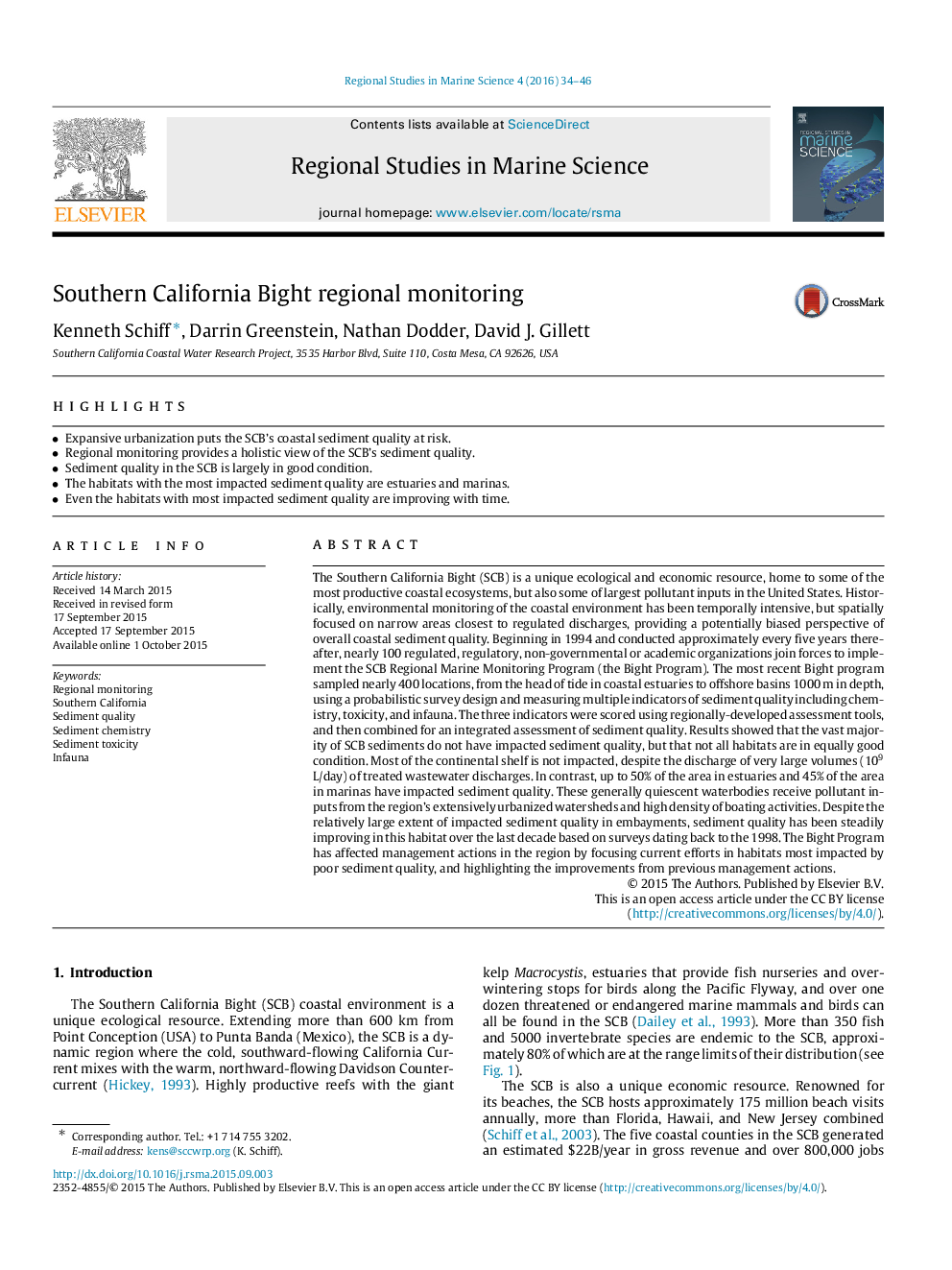| کد مقاله | کد نشریه | سال انتشار | مقاله انگلیسی | نسخه تمام متن |
|---|---|---|---|---|
| 6363304 | 1622823 | 2016 | 13 صفحه PDF | دانلود رایگان |
عنوان انگلیسی مقاله ISI
Southern California Bight regional monitoring
ترجمه فارسی عنوان
نظارت منطقه ای بر منطقه جنوب کالیفرنیا
دانلود مقاله + سفارش ترجمه
دانلود مقاله ISI انگلیسی
رایگان برای ایرانیان
کلمات کلیدی
موضوعات مرتبط
مهندسی و علوم پایه
علوم زمین و سیارات
اقیانوس شناسی
چکیده انگلیسی
The Southern California Bight (SCB) is a unique ecological and economic resource, home to some of the most productive coastal ecosystems, but also some of largest pollutant inputs in the United States. Historically, environmental monitoring of the coastal environment has been temporally intensive, but spatially focused on narrow areas closest to regulated discharges, providing a potentially biased perspective of overall coastal sediment quality. Beginning in 1994 and conducted approximately every five years thereafter, nearly 100 regulated, regulatory, non-governmental or academic organizations join forces to implement the SCB Regional Marine Monitoring Program (the Bight Program). The most recent Bight program sampled nearly 400 locations, from the head of tide in coastal estuaries to offshore basins 1000 m in depth, using a probabilistic survey design and measuring multiple indicators of sediment quality including chemistry, toxicity, and infauna. The three indicators were scored using regionally-developed assessment tools, and then combined for an integrated assessment of sediment quality. Results showed that the vast majority of SCB sediments do not have impacted sediment quality, but that not all habitats are in equally good condition. Most of the continental shelf is not impacted, despite the discharge of very large volumes (109 L/day) of treated wastewater discharges. In contrast, up to 50% of the area in estuaries and 45% of the area in marinas have impacted sediment quality. These generally quiescent waterbodies receive pollutant inputs from the region's extensively urbanized watersheds and high density of boating activities. Despite the relatively large extent of impacted sediment quality in embayments, sediment quality has been steadily improving in this habitat over the last decade based on surveys dating back to the 1998. The Bight Program has affected management actions in the region by focusing current efforts in habitats most impacted by poor sediment quality, and highlighting the improvements from previous management actions.
ناشر
Database: Elsevier - ScienceDirect (ساینس دایرکت)
Journal: Regional Studies in Marine Science - Volume 4, March 2016, Pages 34-46
Journal: Regional Studies in Marine Science - Volume 4, March 2016, Pages 34-46
نویسندگان
Kenneth Schiff, Darrin Greenstein, Nathan Dodder, David J. Gillett,
